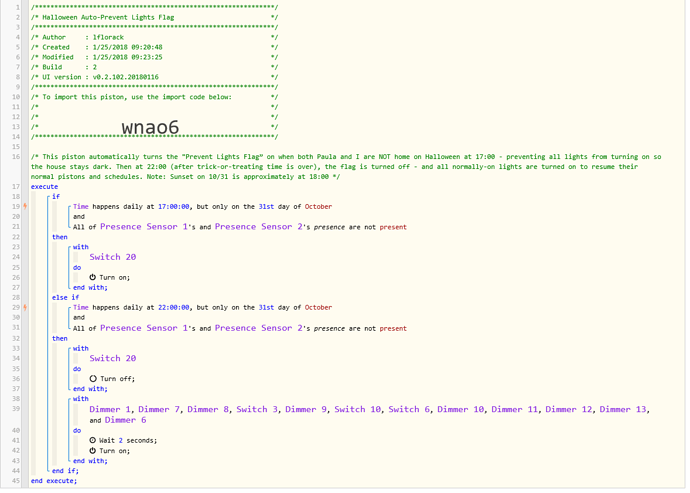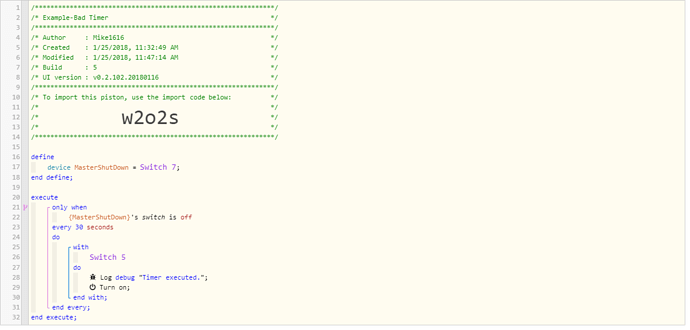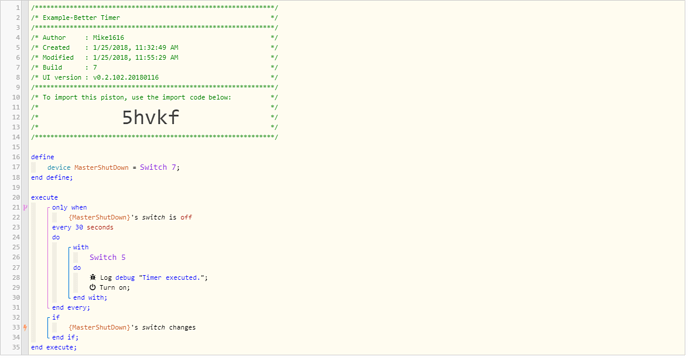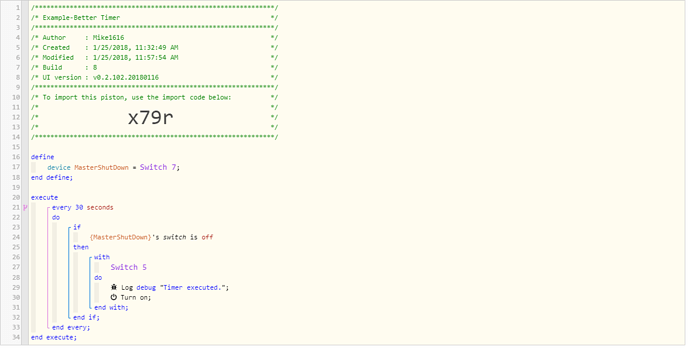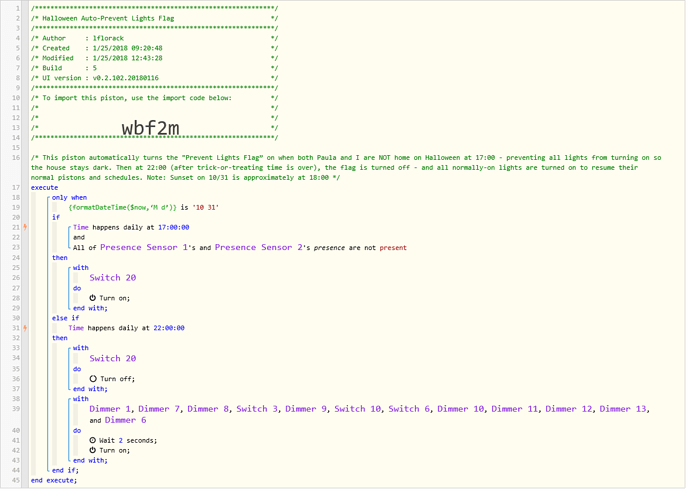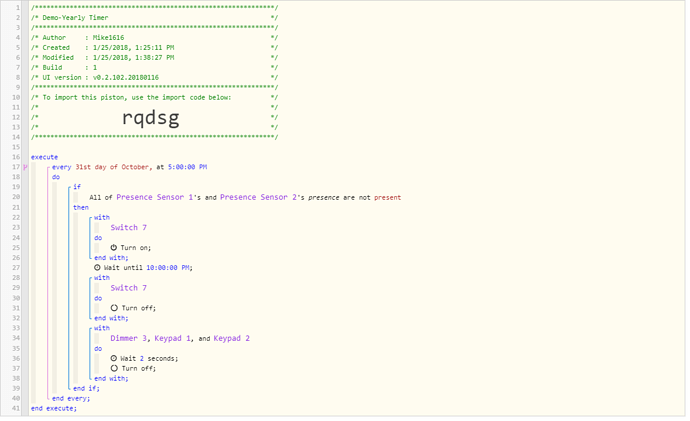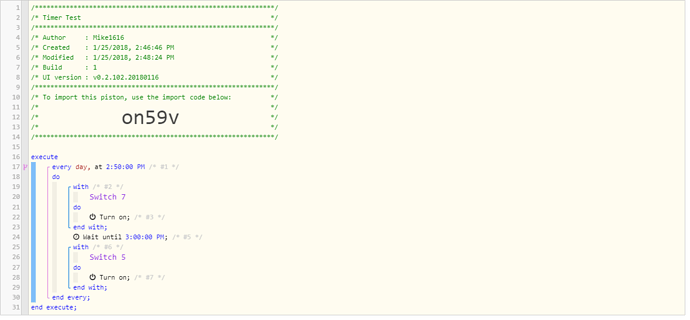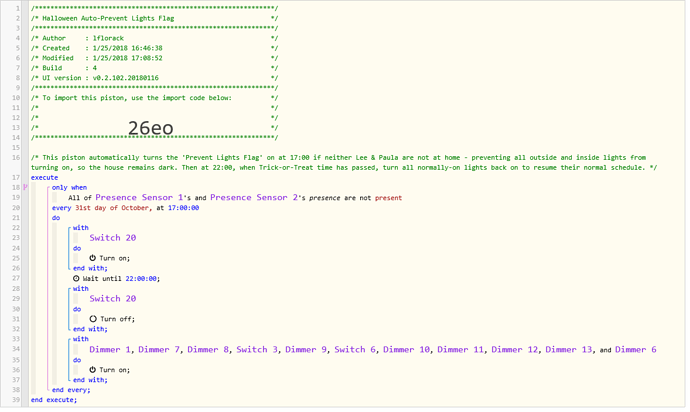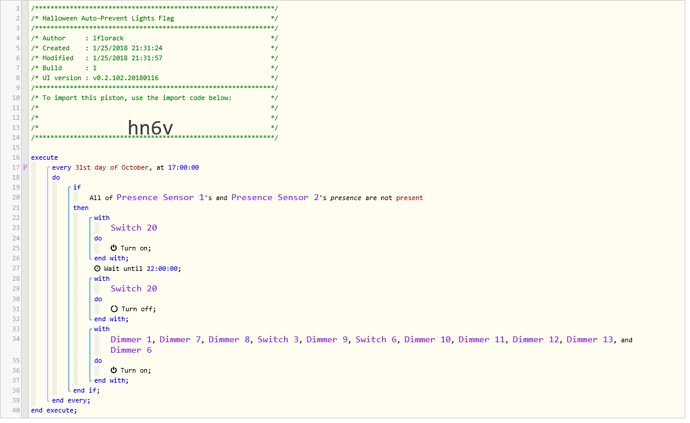I have the following Halloween-specific piston that keeps my house dark - indicating that no one is home for trick or treating:
As you can see, the two triggers include the same two conditions (presence and date). I previously had them as only-if restrictions for the whole piston because it seems better than repeating them twice. I moved them to conditions because I worried that they wouldn’t work properly after recently reading here about Restrictions versus Conditions in a Timer (‘every’ statement).
Did I move them unnecessarily? Help me understand please.
TIA

